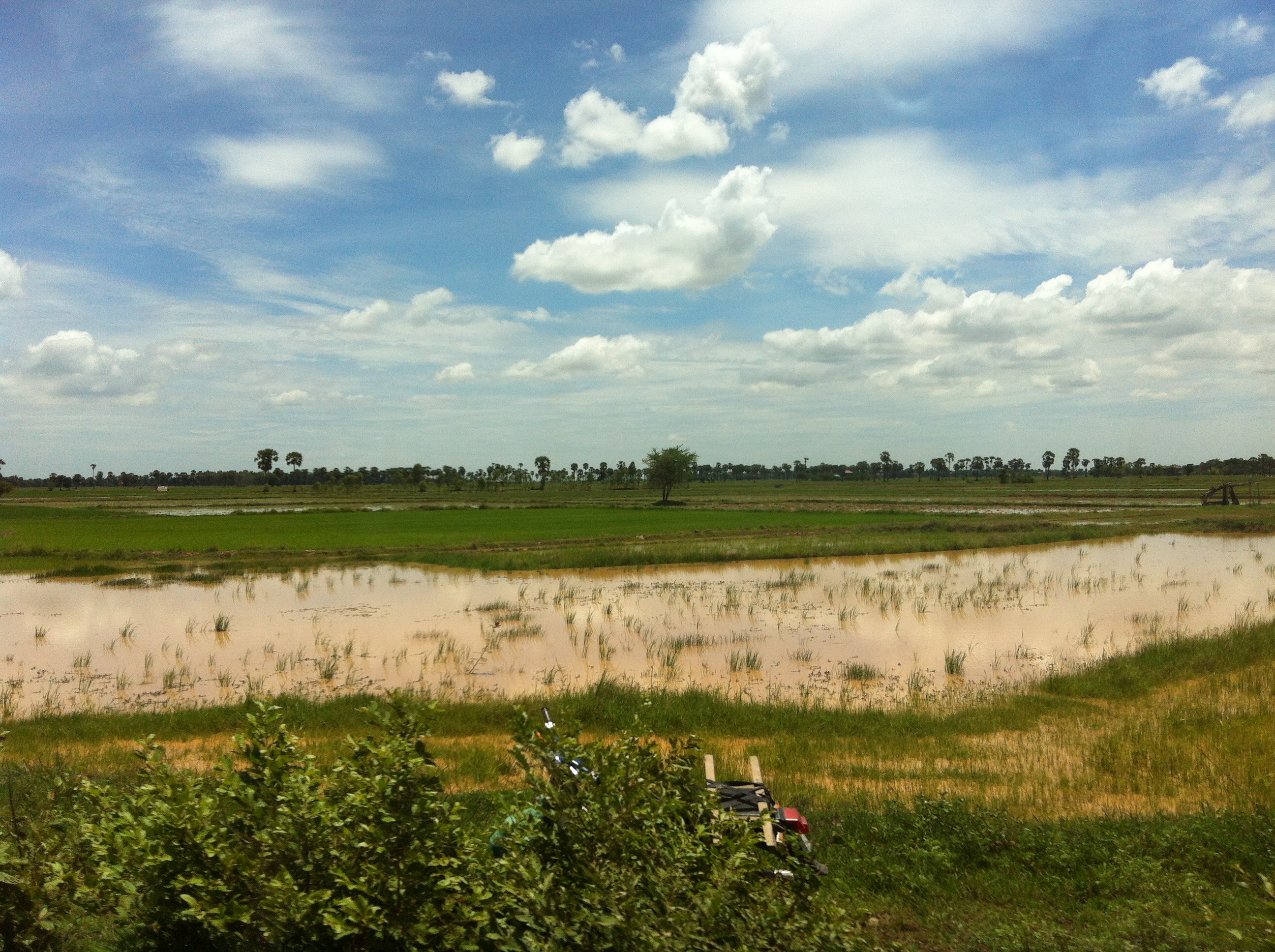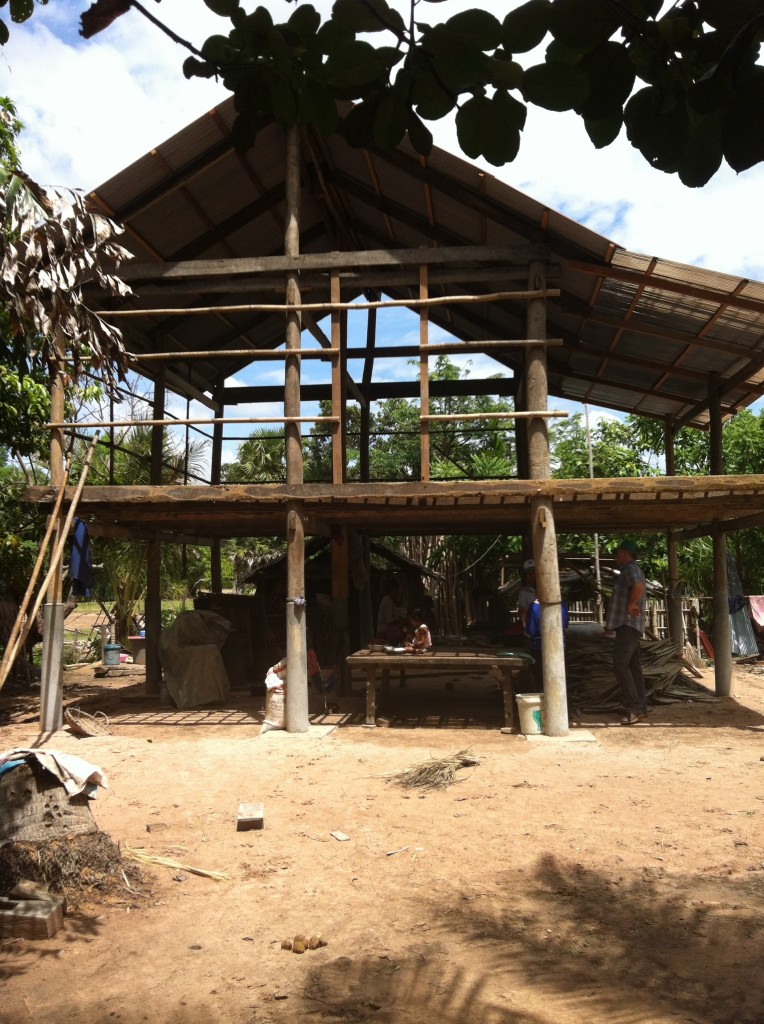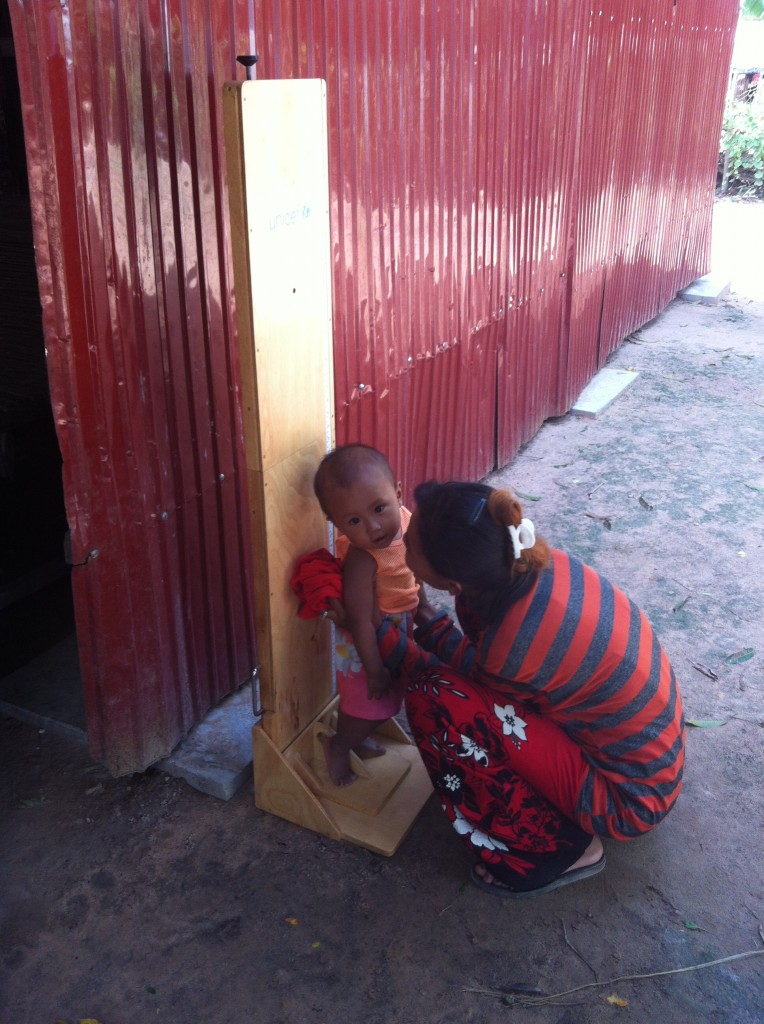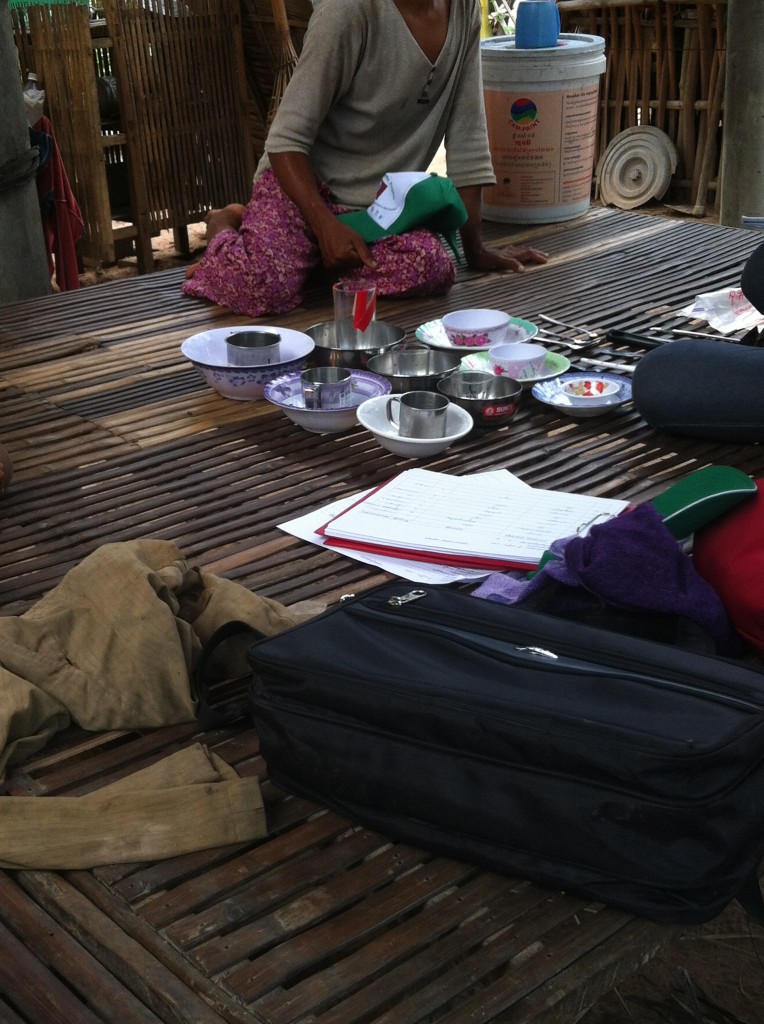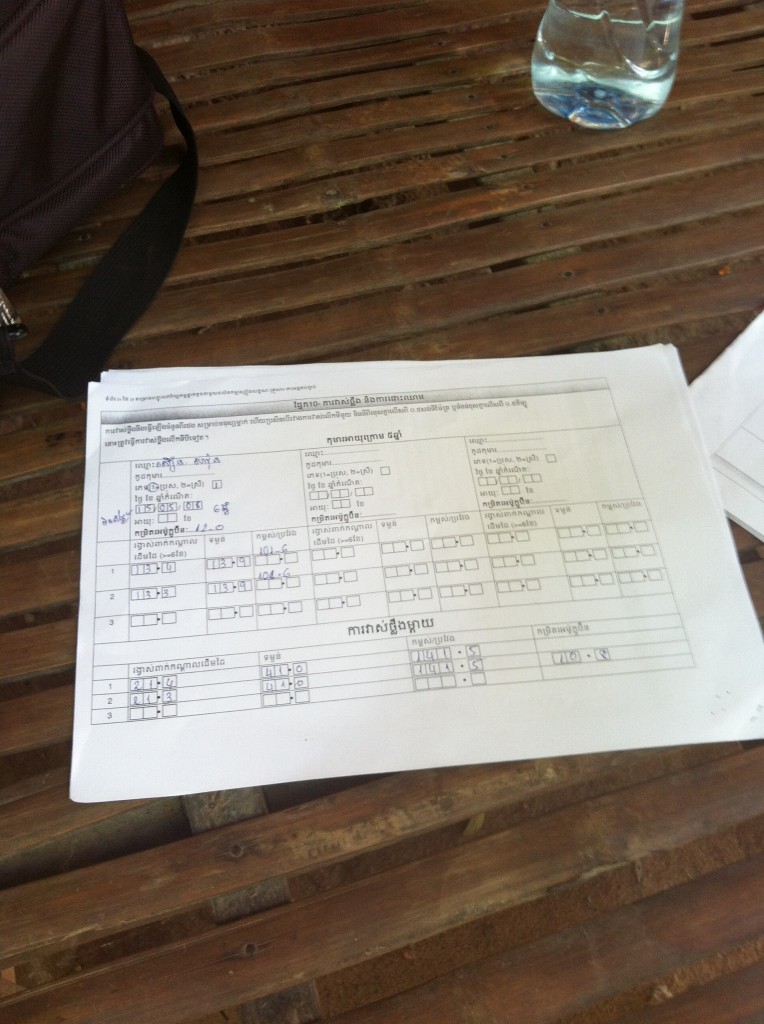Prey Veng: To the Fields!
Over the bridge and an hour out of Phnom Penh, the roads transform into bumpy orange-brown dirt roads and rice fields on both sides of the van that stretch far into the horizon. I was officially out of the city and into the rural countryside. The households we are studying in our Fish on Farms Project all live in Prey Veng, another province that is situated about 3 hours southeast of Phnom Penh. The Royal Government of Cambodia has set a lot of emphasis on trying to improve the nutritional status of farmers and households living in rural areas, and this is a huge deal because basically 80% of the population in Cambodia live in rural areas and play a prominent role in the agriculture industry.
The purpose of my visit to the field was to observe and lend a hand with the end-line surveys and assessments that are currently being done for the project. I traveled with the Country Director and also the Deputy Director of Helen Keller International (HKI) and they basically explained to me how the assessment tools are being used and how the field teams operate when visiting the villages. We visited a couple households and it was interesting to see how the nutritional assessment tools that I learned in class were being used out in the field. For example, I got to see length boards and height boards used for anthropometric measurements that were being collected for demographic information. I also got to see mid-upper arm circumference (MUAC) measurements which were used to evaluate the prevalence of child malnutrition in this area. The most intriguing aspect to me was watching the team take hemoglobin measurements using a rapid test called Hemocue (which I’m also in the process of learning to do), and the results were used as a quick indicator for possible anaemia. Some participants also required blood draws for further analysis and I’ll be working with the samples in the lab back in Phnom Penh next week which will be really exciting. Beyond just collecting that information, if Hb levels were below a certain cutoff point, we also had to encourage the parents or guardian to take their child to the clinic for further assessment. Finally, I got to see an enumerator conduct a 24 hour food recall, which is basically asking the mothers to recall what they, and their children, ate over the last twenty-four hours. Sounds straightforward, but actually really time-consuming to do. There are so many different store products, vegetables and meals they prepare that it becomes an overwhelming task for anyone (especially in 40 degree weather). Not only did we have to collect the type of foods they ate, but also the portion size that had to be referenced to standards and any unknown or new recipes had to be broken down into basic ingredients which can often be up to 8-10 different ingredients. This was also all done in Khmer, which will have to be translated into English first before we can start analyzing the data and estimating nutritional values.
I thought that it was also fascinating just observing the lifestyle and homes here, and after freshly taking an International Nutrition course, there are so many nutritional issues that immediately pop into your head, and I was finding myself thinking: If we could just change this one behavior or implement this one small thing, it could really improve their nutritional outcomes. And some things are quite simple, like making sure children have footwear so that they don’t get worm infections, because having this infection can make you lose a substantial amount of blood and also block your absorption of iron, which immediately puts the children at risk for iron deficiency. Or just simple hygiene practices like having latrines being separated from the rest of the home, or not allowing farming animals to roam freely around the cooking area. Simple things, but very hard to implement from a research perspective because so many of these things are behavioral and they are hard to monitor and evaluate if you don’t have direct outputs to measure. This is why Fish on Farms is such a great project because you can measure and evaluate so many different aspects. For example, we can ask direct questions like how many fish they are raising per season, what kinds and how much of each vegetable are they growing in their plots each season, but also economic-related questions like how much money they are spending now that they have a pond or garden, or how much they are earning now that they have these additional inputs. Anyways, amazing project that integrates nutrition, economics, gender equality and epidemiology, and led by an extremely capable and diverse interdisciplinary team. I had a great day out in the field, and I can’t wait to get back out there once I finish hammering out the details in the next few weeks.
